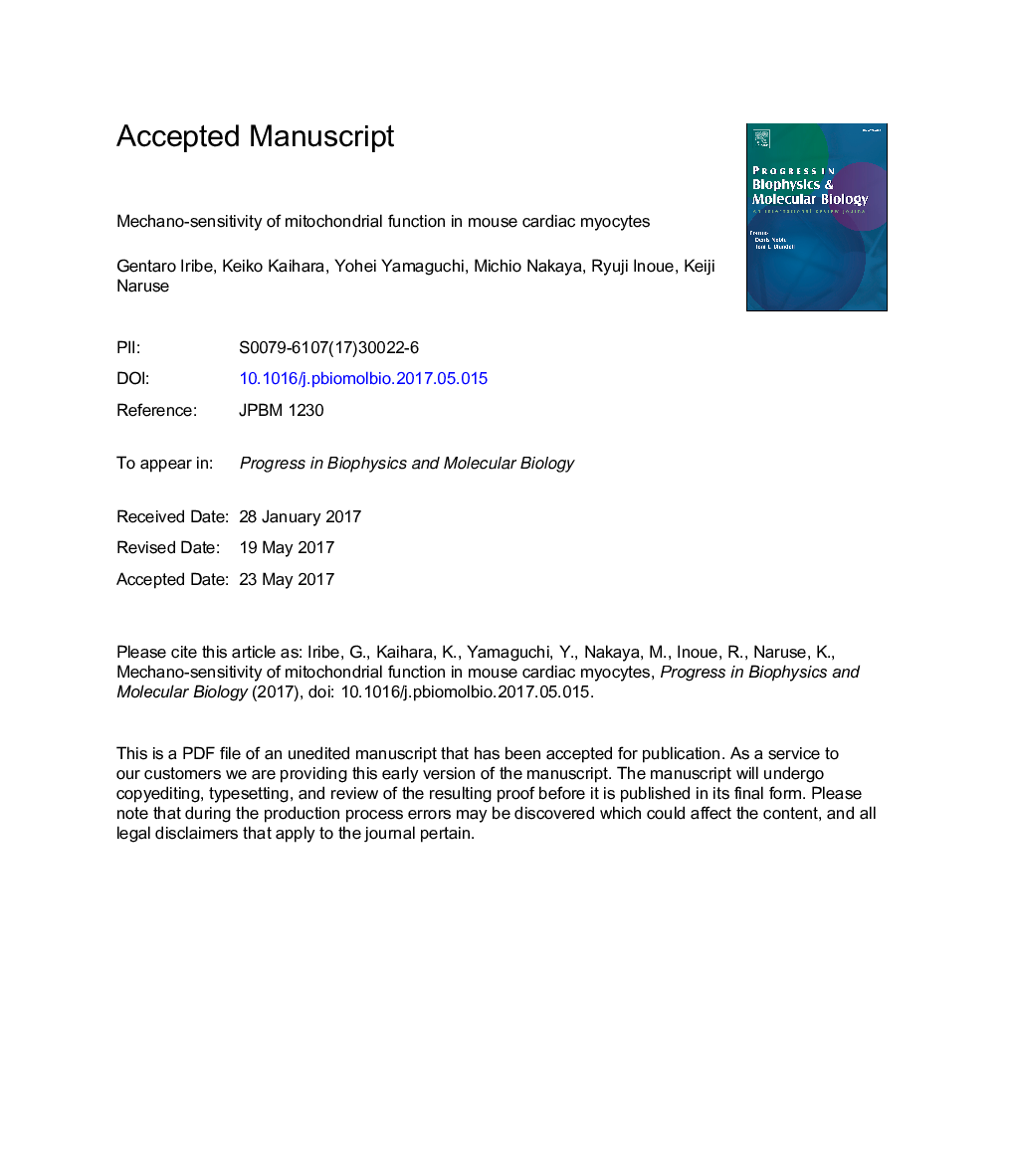| Article ID | Journal | Published Year | Pages | File Type |
|---|---|---|---|---|
| 8400703 | Progress in Biophysics and Molecular Biology | 2017 | 27 Pages |
Abstract
Mitochondria are an important source of reactive oxygen species (ROS). Although it has been reported that myocardial stretch increases cellular ROS production by activating nicotinamide adenine dinucleotide phosphate (NADPH) oxidase 2 (NOX2), referred to as X-ROS signalling, the involvement of mitochondria in X-ROS is not clear. Mitochondria are organelles that generate adenosine triphosphate (ATP) for cellular energy needs, which are mechanical-load-dependent. Therefore, it would not be surprising if these organelles had mechano-sensitive functions associated with stretch-induced ROS production. In the present study, we investigated the relation between X-ROS and mitochondrial stretch-sensitive responses in isolated mouse cardiac myocytes. The cells were subjected to 10% axial stretch using computer-controlled, piezo-manipulated carbon fibres attached to both cell ends. Cellular ROS production and mitochondrial membrane potential (ÎÏm) were assessed optically by confocal microscopy. The axial stretch increased ROS production and hyperpolarised ÎÏm. Treatment with a mitochondrial metabolic uncoupler, carbonyl cyanide-p-trifluoromethoxyphenylhydrazone (FCCP), at 0.5 μM did not suppress stretch-induced ROS production, whereas treatment with a respiratory Complex III inhibitor, antimycin A (5 μM), blunted the response. Although NOX inhibition by apocynin abrogated the stretch-induced ROS production, it did not suppress stretch-induced hyperpolarisation of ÎÏm. These results suggest that stretch causes activation of the respiratory chain to hyperpolarise ÎÏm, followed by NOX activation, which increases ROS production.
Keywords
Related Topics
Life Sciences
Biochemistry, Genetics and Molecular Biology
Biophysics
Authors
Gentaro Iribe, Keiko Kaihara, Yohei Yamaguchi, Michio Nakaya, Ryuji Inoue, Keiji Naruse,
